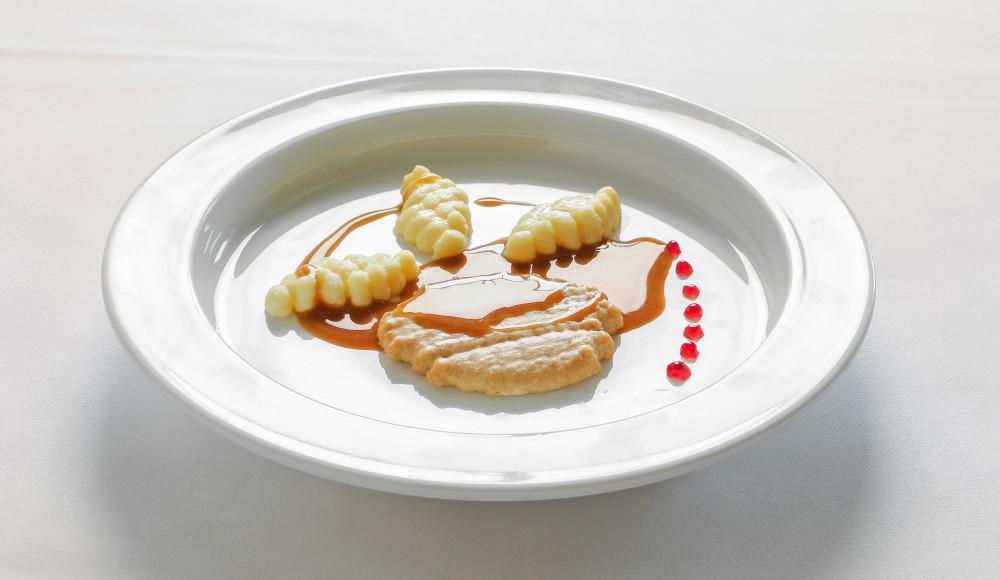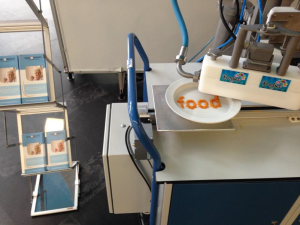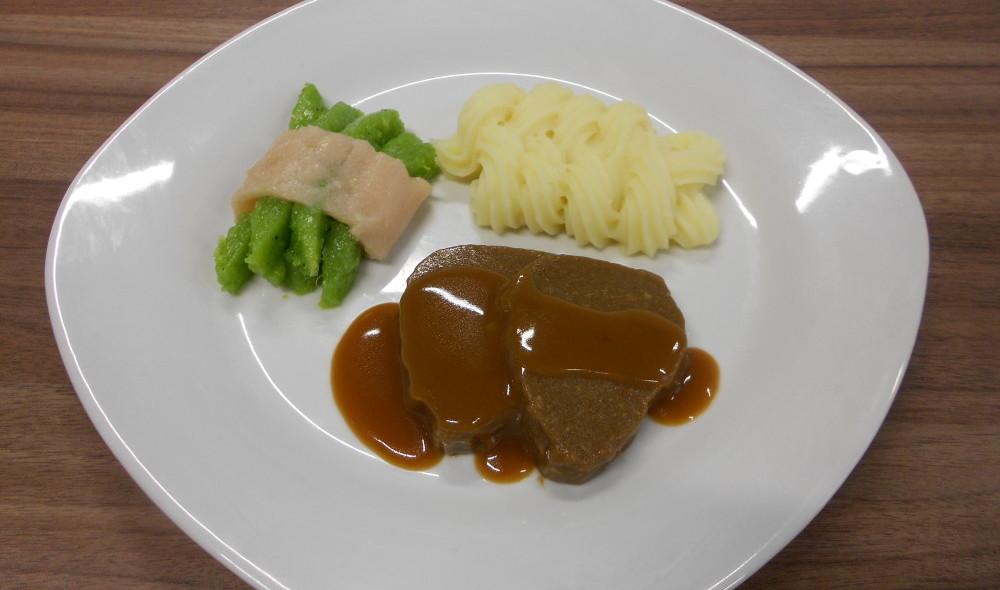 For the most part the several 3D printers on the market that print with food products are essentially novelties being used to make desserts, candies, cake decorations or 3D printed pizzas. But a project being funded by the European Commission and several nations, including Italy, Germany, Austria, Denmark and the Netherlands, is trying to use the technology to improve the lives of their aging citizens. The Performance Project is developing a system that uses food 3D printers to create custom meals for elderly patients who are dealing with dysphagia.
For the most part the several 3D printers on the market that print with food products are essentially novelties being used to make desserts, candies, cake decorations or 3D printed pizzas. But a project being funded by the European Commission and several nations, including Italy, Germany, Austria, Denmark and the Netherlands, is trying to use the technology to improve the lives of their aging citizens. The Performance Project is developing a system that uses food 3D printers to create custom meals for elderly patients who are dealing with dysphagia.
Dysphagia is a condition described as a difficulty of swallowing or masticating food and has a variety of causes, typically the result of surviving a stroke, dementia or dealing with a variety of cancers. This is a dangerous condition for anyone to deal with, but specifically the elderly as it can often lead to significant and unhealthy weight loss and poor nutrition. Typically dysphagia diets include puréedand pre-mashed food that is about as unappetizing in both taste and texture as you would imagine. But the researchers working on the Performance Project believe that they can help these patients enjoy their meals again by using advanced paste 3D printing technology.
The key to the Performance Project is the ability to use food 3D printers to custom create patient-specific meals. Because 3D printing carries the same cost for a single print job as multiple identical print jobs, it offers unlimited customization options, so patients won’t need to settle for meals made for a wide variety of patients, but rather their individual needs. These meals will include all of the flavors and textures that patients prefer, as well as any vitamins or specific nutritional needs they may have. By custom mixing food materials, the 3D printed food will replicate the texture of its non-puréed counterparts, but have enough liquidity to dissolve quickly in the patient’s mouth.
 The Performance system is more than simply 3D printed food however, it is an entire automated workflow controlled by an algorithm created designed by German IT company Sanalogic. The process starts with an app that allows the patient to order the foods that they like, their profile stores any specific dietary requirements approved by their doctor, as well as the textures required for them. The information is sent to a Foodjet 3D printing facility where the software develops each meal and 3D prints it in a special tray. The tray is covered, frozen and shipped to the care facility who reheats it in a specially designed container that ensures equal heating so there are no cold spots inside of the food.
The Performance system is more than simply 3D printed food however, it is an entire automated workflow controlled by an algorithm created designed by German IT company Sanalogic. The process starts with an app that allows the patient to order the foods that they like, their profile stores any specific dietary requirements approved by their doctor, as well as the textures required for them. The information is sent to a Foodjet 3D printing facility where the software develops each meal and 3D prints it in a special tray. The tray is covered, frozen and shipped to the care facility who reheats it in a specially designed container that ensures equal heating so there are no cold spots inside of the food.
All of the food is made from natural ingredients, puréed or liquified into a paste material. A gelling agent is added to create the texture and is adjusted based on the individual’s needs or food type being printed. This will include any specific medical needs of the patient based on their size, weight, gender and nutritional deficiencies. And these food profiles can be adjusted at any time to ensure that the diet is always well-balanced or optimized for their current needs. While the Performance Project and their partners are still developing the system, they already have all of the pieces in place for a working test model.
Here is a video describing the Performance Project workflow:
“Printed puréed food needs to be firm after printing, but liquid enough to dispense from the printing heads. We use a printing technology based on jet printing. A gelling agent supports the shaping of the puréed and strained food. On the one hand the gelling agent needs to be compatible with the printing system, while on the other hand the printing system must support food matrices such as meat, carbohydrate and vegetables,” explained the founder and CEO of Performance Project partner company Foodjet, Pascal de Grood.
 Consumer tastings were carried out earlier in the month in Brussels by several elderly care homes and while there is still a ways to go the results were mostly positive. Another of Performance Project’s business partners, Biozoon Food Innovations, handled the tests and presented their findings at a recent project conference. The early results included 54% of respondents saying that the meal’s texture was good, 79% found the meals to be equally heated and 43% would choose the Performance meals while dealing with swallowing or chewing difficulties.
Consumer tastings were carried out earlier in the month in Brussels by several elderly care homes and while there is still a ways to go the results were mostly positive. Another of Performance Project’s business partners, Biozoon Food Innovations, handled the tests and presented their findings at a recent project conference. The early results included 54% of respondents saying that the meal’s texture was good, 79% found the meals to be equally heated and 43% would choose the Performance meals while dealing with swallowing or chewing difficulties.
 The entire food ordering and customization system, including the software, printing, delivery and reheating process was also tested, and the technology performed as expected. While the project is still in its early stages before it can be commercialized into a viable business model, the advances being made are still exciting for the future of custom meals. Beyond food being created for the elderly, individually optimized food could be 3D printed for a wide range of health issues, and could even be altered to include difficult to administer medications. Discuss this story in The Performance Project forum on 3DPB.com.
The entire food ordering and customization system, including the software, printing, delivery and reheating process was also tested, and the technology performed as expected. While the project is still in its early stages before it can be commercialized into a viable business model, the advances being made are still exciting for the future of custom meals. Beyond food being created for the elderly, individually optimized food could be 3D printed for a wide range of health issues, and could even be altered to include difficult to administer medications. Discuss this story in The Performance Project forum on 3DPB.com.
Subscribe to Our Email Newsletter
Stay up-to-date on all the latest news from the 3D printing industry and receive information and offers from third party vendors.
You May Also Like
US Army Corps of Engineers Taps Lincoln Electric & Eaton for Largest 3D Printed US Civil Works Part
The Soo Locks sit on the US-Canadian border, enabling maritime travel between Lake Superior and Lake Huron, from which ships can reach the rest of the Great Lakes. Crafts carrying...
Construction 3D Printing CEO Reflects on Being Female in Construction
Natalie Wadley, CEO of ChangeMaker3D, could hear the words of her daughter sitting next to her resounding in her head. “Mum, MUM, you’ve won!” Wadley had just won the prestigious...
Blue Laser-powered M600 3D Printer Launched by Meltio
Founded in 2019 as a joint venture between Additec and Sicnova, metal 3D printer OEM Meltio develops and manufactures high-performance and easy-to-use metal 3D printing solutions that use its patented wire-laser metal...
3D Printed Storage Tanks Cut Material Costs by 25%
In a previous article, “Concrete Dreams: Let’s Print Money, Not Houses,” we discussed how the spotlight on 3D printing homes might be misplaced. Bollards, pedestrian bridges, and concrete tanks could...





























